The Day the Nimbus Weather Satellite Exploded
The writer’s grandfather recalls a seminal moment in the Space Race
/https://tf-cmsv2-smithsonianmag-media.s3.amazonaws.com/filer/85/f7/85f7e1f4-ac70-41ee-a57c-c25b0cd7bf97/14879514877_deefe7ba47_o.jpg)
Growing up, my grandfather was largely a stranger to me. He quietly puttered on various projects, playing the supporting role to my grandmother’s vibrant presence. But then her Alzheimer's came, disassembling her brain as easily as taking apart a puzzle, erasing her memory and then her personality—until we lost her entirely.
Her death had an unexpected effect. It brought my now 96-year-old grandfather, Isaiah Sheldon Haas, out of his shell. Stories of a lifetime of adventure began pouring out: his years as a code-breaker in World War II, visits to China as a General Electric ambassador, working as an engineer at NASA at the height of the Space Race. But by far the most dramatic tale is the story of the Nimbus weather satellite explosion.
The project came into his life in 1966, with a phone call from his old boss, Leon Farnham, who was offering him another job. At the time, my grandfather—known to everyone who knows him as Sheldon—had just been promoted as a General Electric engine and aircraft manager, a role higher than he ever dreamed of attaining, so he wasn’t giving it up easily. “I’m happy,” he said.
“You’ll like it,” Farnham countered. “Nimbus program manager.”
His response: “What the hell is that?”
At the time, NASA’s Nimbus program was still in its early days. The first Nimbus satellite launched in August 1964, kicking off a series of Earth-observing craft that would give scientists an unprecedented picture of evolving weather systems worldwide. Roughly the size of two Jeeps stacked atop one another, the 825-pound satellite was the first test of next-generation meteorological research tools. Dubbed “the butterfly” after its two expansive, rotating solar panels, it was equipped with the most advanced imaging systems of the day.
The Nimbus satellites were a story of firsts: the first to globally map photosynthetic organisms; the first to measure profiles of ozone (a potent greenhouse gas), temperature and water from space; the first to capture developing hurricanes and more. Each successive mission—there were seven in all—carried increasingly complex experiments hundreds of miles into the sky to monitor and image our planet.
The data from the Nimbus instruments also allowed scientists to begin developing computer models to forecast weather a week or even two in advance, virtually impossible beforehand. A National Academy of Science-National Research Council report estimated that this type of long-range weather prediction would save more than $2 billion per year for industries as diverse as transportation and fishing. The impacts from Nimbus can still be felt today, from modern weather forecasting and climate science to GPS and search and rescue systems.
“Nimbus made a mark on meteorology that remains today. It measured the air temp, it measured the winds, it measured the rain,” I was told by Ralph Shapiro, Nimbus spacecraft operations manager who oversaw all seven satellites, the last of which launched in 1978. “It just advanced weather forecasting immensely.”
The first satellite’s journey was cut short, however. After just a month of peering down at Earth, its solar paddles, which generated the necessary operating power for the craft, locked into position, preventing them from turning to bask in the sun. The mission was scrapped on September 22, 1964.
The satellite’s flight may have been brief, but the data it collected was impressive. The information demonstrated both the power and potential of meteorological satellites. After Nimbus-1 ceased operations, Goddard Space Flight Center, which managed the program, was armed with enough information to propose an ambitious plan for continuing the Nimbus missions.
My grandfather came aboard the Nimbus team as an outside contractor with General Electric to work on what would become the third satellite in the series, Nimbus-B. GE had been hired to build and test the satellite control and integration systems. Similar to Nimbus-1, known as Nimbus-A before its launch, the craft was butterfly-shaped, sporting eight-by-three-foot solar panels on either side. But the 1,260-pound Nimbus-B was equipped with an additional power source that, at the time, had only flown on military craft: Radioisotope Thermoelectric Generators, or RTGs for short. The pair of 28-pound capsules housed a core of radioactive plutonium-238—the slow decay of which produced a total of about 50 watts of power and could help keep the satellite humming along for a year beyond the expected life of the solar panels.
Yet amidst Cold War suspicions, not all were celebrating the new eye in the sky. Among the many Nimbus experiments was a test of animal tracking from space. In a collaboration between NASA and the Smithsonian Institution, scientists fitted a Yellowstone elk named Monique (Moe for short) with a radio-collar and planned to follow her wanderings using instruments aboard the satellite. Shortly after the eventually successful launch of Nimbus-3, congressman Cornelius E. Gallagher of New Jersey made a heartfelt plea to Congress titled, “Moe may be nimble but he cannot beat Nimbus.”
In his letter to Congress, he compared Nimbus to a plotline out of the classic George Orwell novel 1984:
“The comings and goings of Moe as he does his elk thing are now an inerasable part of a scientist’s computer…[T]his use of wildlife demonstrates a perfectly plausible way from some individuals to stifle the life of their fellow humans…If Nimbus 3 can tell all about Moe, Nimbus 10 or 50 or 100 can tell all about a ship or an airplane or, for that matter, a person. All it would take would be a bug attached in the right place."
Despite the concerns, this tracking system was an early iteration of satellite-based search and rescue, which later saved two stranded hot air balloonists in 1977—one of its earliest triumphs. Since then, the system has saved tens of thousands of others.
The Launch
The satellite was planned to launch from Vandenberg Air Force Base, near Lompoc, California, in the wee hours of May 18, 1968. It would rocket southward over the Pacific Ocean to enter a polar orbit, zipping over both north and south poles as it spun around the Earth.
The key members of the Nimbus program and their wives all gathered to witness the launch, Shapiro recalls. They looked out at the satellite atop its towering rocket boosters from behind the glass of the visitor’s center in Building 14 at the Mission Operations Center. Also in place was the range safety officer. If anything went awry, his role was to detonate the craft, preventing any wayward satellites from causing harm or damage.
The countdown began.
All seemed to be going to plan until the device left the pad. As it started to make its turn southward over the ocean, Nimbus B veered toward land. So with a push of a button, the safety officer exploded the dual rocket boosters, plunging the satellite along with its two nuclear power generators and millions of dollars of scientific instrumentation into the Pacific. It exploded just 95 miles west of the unsuspecting residents of Los Angeles.
Nimbus-B’s flight had lasted a mere 120.8 seconds.
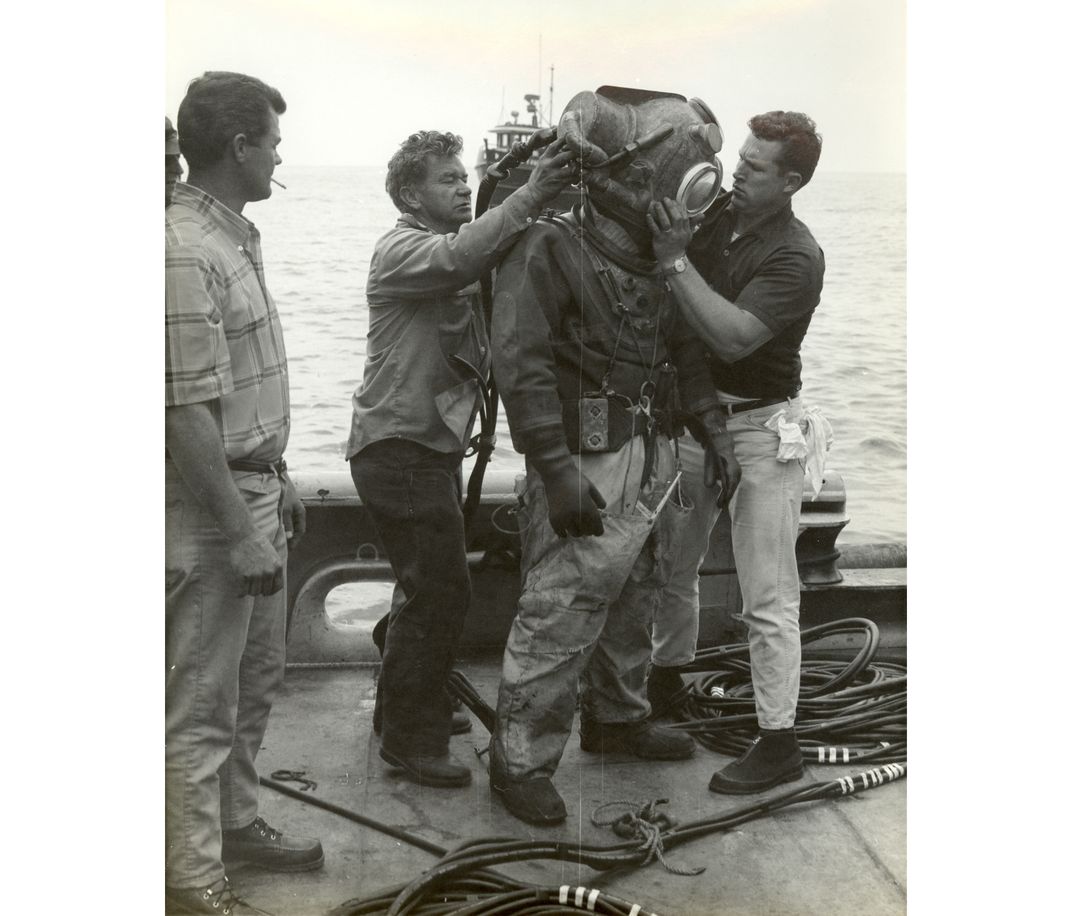
The Recovery
All involved in the project were in mourning that night. “The wives got together and they had a wake at the home of one of the Nimbus control device [team members],” says Shapiro. “It was a sad night for us. There was nothing we could do.”
When I ask my grandfather about what happened at the launch he lets out a terse, “Oh,” as if in pain. “Hundreds of people had put their heart and soul into this program,” he says. “It was such an impact, an emotional impact for a lot of people.”
NASA teams assembled to investigate the failed mission; it would take weeks to parse out what happened that early morning. A NASA report released in October notes the cause was “human error,” involving improper installation of the launch vehicle gyroscope—the device that helped tell the rocket up from down and left from right.
According to Shapiro, it all hinged on a small metal shaft, called a dowel pin, which marked the correct orientation for the gyro installation. But something happened to the pin while the engineers tested the gyro, leaving the gadget incorrectly rotated 90 degrees. The likely culprit, explains George Looschen, who worked as a NASA avionics engineer at the time, was that the hole in which this pin was inserted was deeper than the pin was long. So when mechanics plunked the device back in place, they shoved this pin back through the hole, not noticing the gadget’s rotated orientation.
This seemingly insignificant change sent the craft along its cockeyed path. As the control program kicked in—supposedly orienting the rocket south—it veered off course. Or as my grandfather puts it, “When the pitch program came into effect, the missile thought it wanted to go that way,” with one arm pointing left, “but it went that way,” with the other arm pointing right.
Meanwhile, the search was on for the Nimbus remains. Though the mangled craft could help engineers diagnose what went awry, its nuclear power source was the primary target for the recovery team. Officials reassured the public that the fuel canisters would contain the radiation from the plutonium-238 housed inside, but the radioactive isotope does emit potentially cancer-causing alpha radiation, so they didn’t want to leave the canisters in the corrosive ocean environment. To top it off, the pair of RTGs carried a million-dollar price tag.
“[A]s many as five search vessels at a time have fought pounding waves in winds up to 30 knots trying to find the wreckage in waters as deep as 300 feet,” read a New York Times report on the explosion. Working with divers, the search vessels scoured the Pacific Ocean, where the vessel was supposed to have gone down just north of San Miguel Island.
A chartered research submarine spotted the twisted remains of the butterfly and parts of its launch vehicle on September 30. But the hunt continued for its nuclear power source. Finally, after months of searching and some $200,000 in costs, on October 9, 1968, a team of divers and a submersible delicately scooped the capsules from the sea floor. A crane was used to haul the nearly unrecognizable satellite out of the water.
“It was a sad sight, all corroded and bent, but we are glad to have it back, ” Wilber B. Huston, deputy Nimbus project manager, wrote in a letter to John B. Tuk, a guest invited to the satellite launch. “The reason for the malfunction of the Thor guidance system has been isolated and we will not be having that particular difficulty again.”
Try, Try Again
While the search and rescue churned along, the Nimbus team brainstormed their next steps. A massive group, including researchers, scientists, mechanics, engineers and more had worked on the craft for somewhere around a decade, my grandfather says. “They built the equipment, we integrated it in the satellite, we launch it and it goes into the ocean. What do you do now?”
The answer was “try again.”
The problem, however, was both cost and time. But my grandfather, who would help lead the rapid rebuild of Nimbus B, had a plan. Upon starting the job, the first thing he did was to check out the control system test program. He immediately spotted a problem: There were no spares.
So he went to Moe Schneebaum, the engineering directorate chief, to plead his case. “You can’t go into this serious test program and expect everything to work perfectly,” he recalls saying. In order to replace a broken part, it could take three months or more for a new one to arrive, he explains. Schneebaum granted the purchase. “If we hadn't done that we wouldn't have had a recovery satellite—never,” my grandfather says.
Armed with the control system spares and refurbished plutonium-238 RTGs recovered from the ocean floor, the replacement would cost a mere $20 million.
On April 14, 1969—just under 11 months since the failed Nimbus-B mission—Nimbus-B2 launched from Vandenberg Air Force Base, becoming the third Nimbus satellite to achieve orbit. The craft's triumphant launch into space gave scientists their first detailed look at our planet’s atmospheric pulse. And though the Nimbus missions are often overlooked in the litany of NASA accomplishments, these satellites and the thousands of dedicated people who assembled, tested and tracked their every movement through space were essential in advancing satellite technology to where it stands today.
When Nimbus-B2 launched into space, my grandfather was watching over 2,000 miles away at Goddard in Greenbelt, Maryland. “It was a happy day, I’ll tell you,” he says. “When that thing went into orbit and started transmitting data—wow. Talk about,” he pumps his fists in excitement, “Yeah!”
/https://tf-cmsv2-smithsonianmag-media.s3.amazonaws.com/accounts/headshot/Wei-Haas_Maya_Headshot-v2.png)
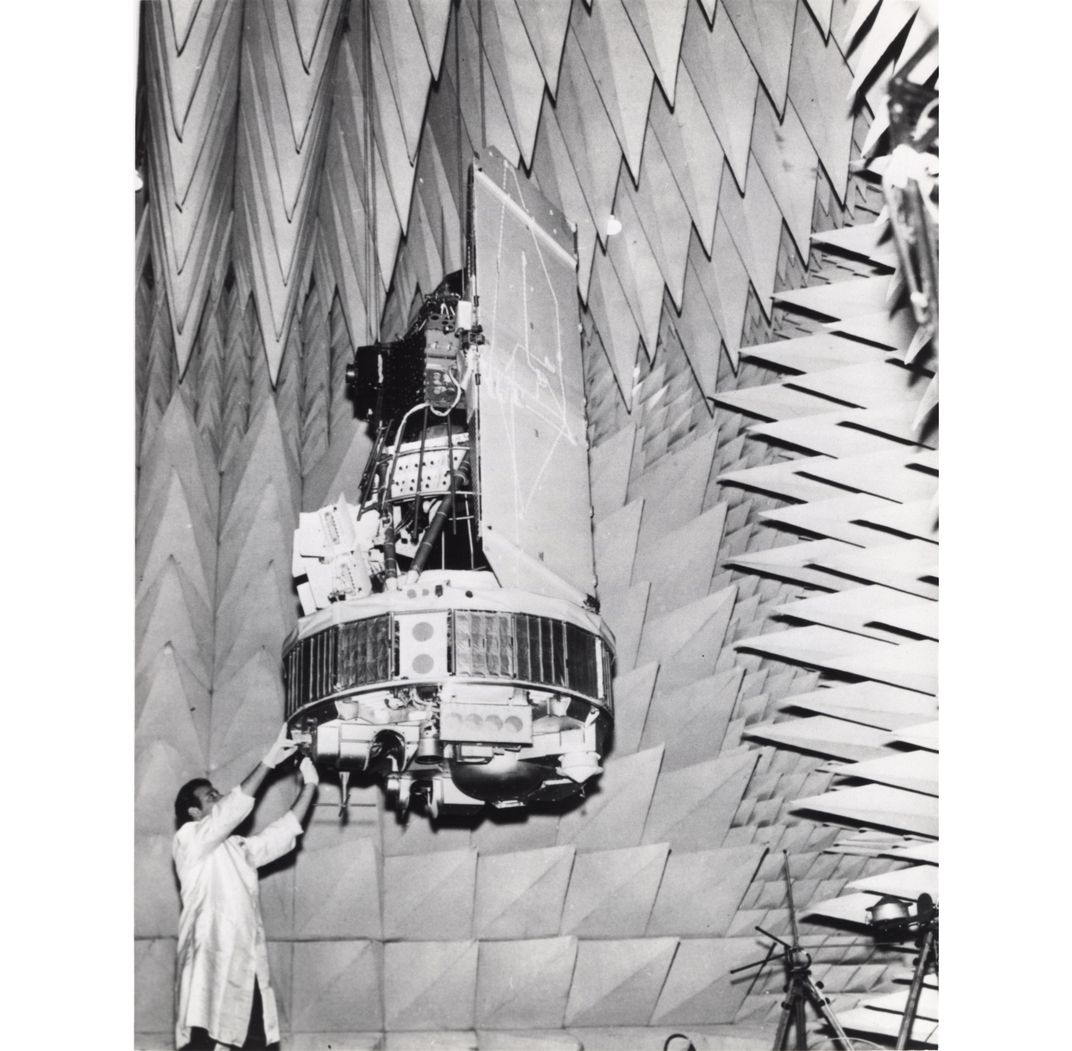
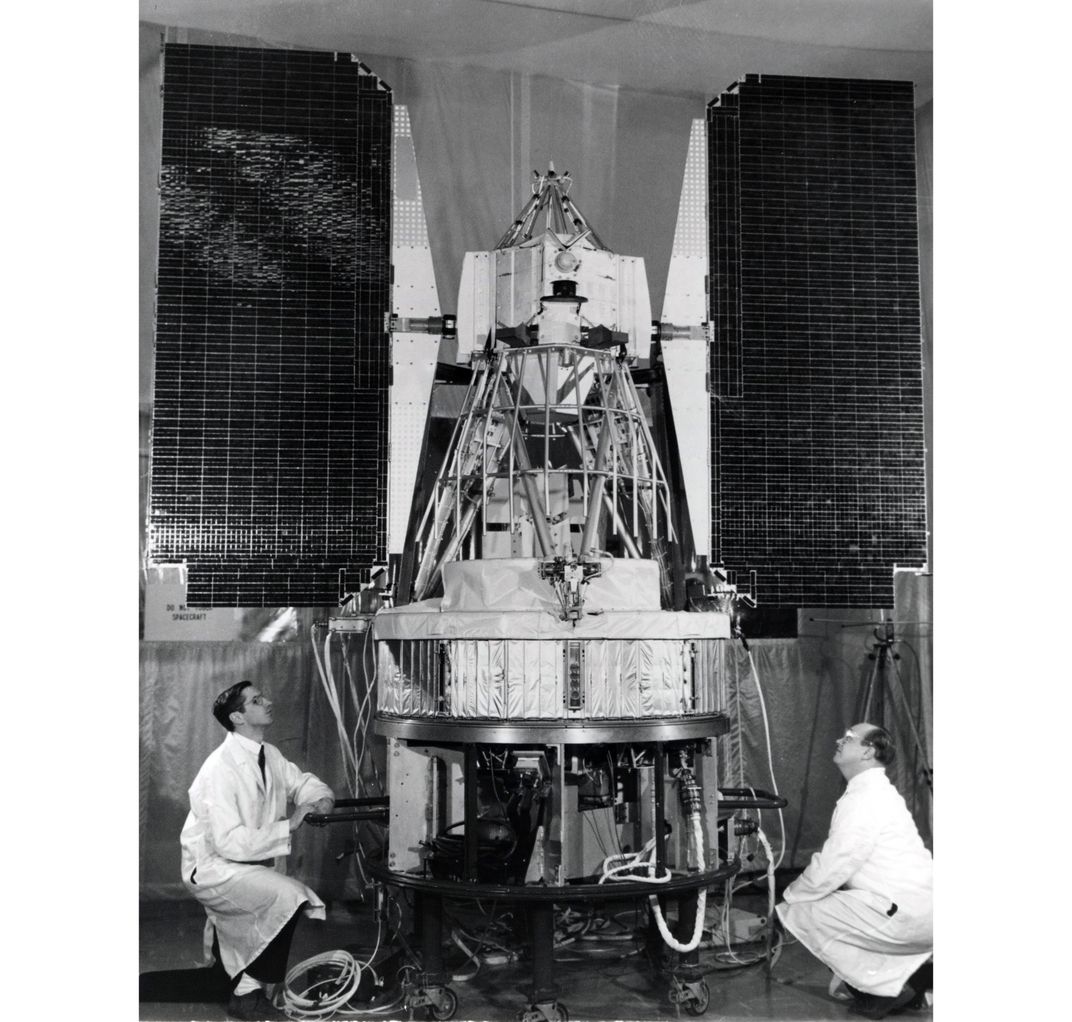
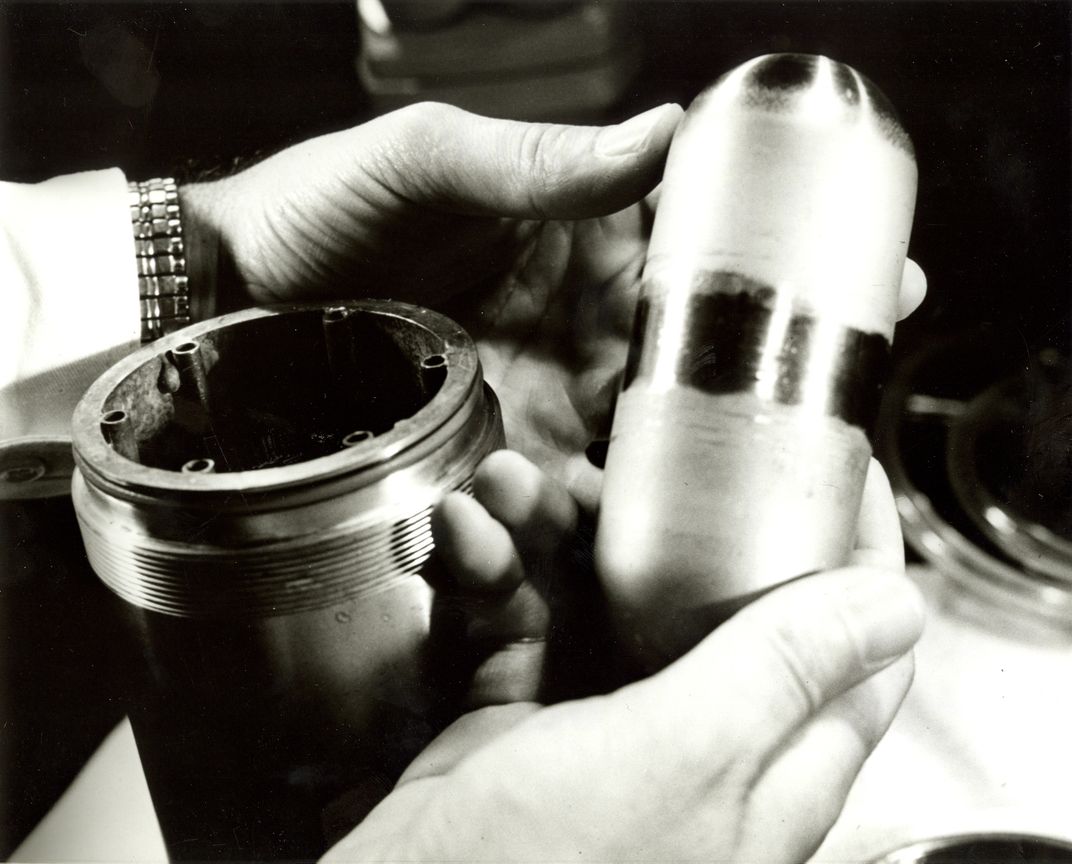


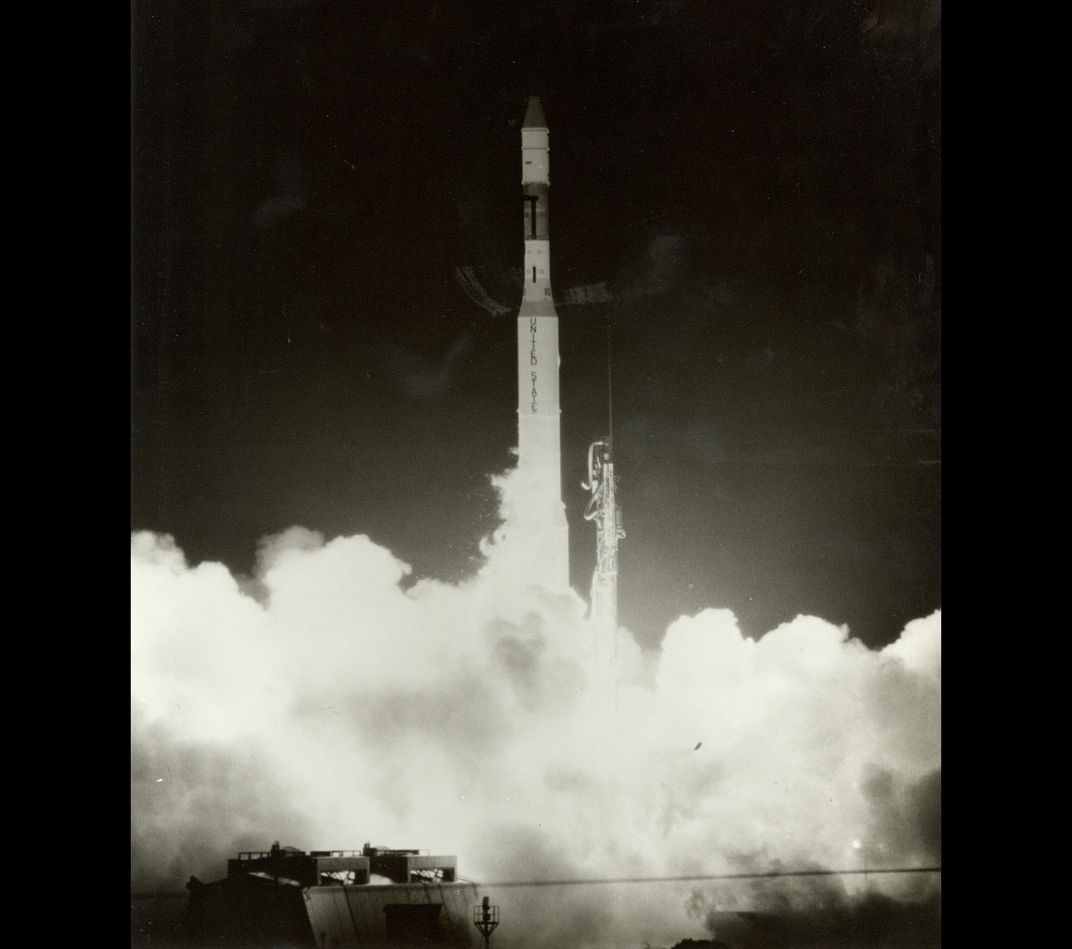
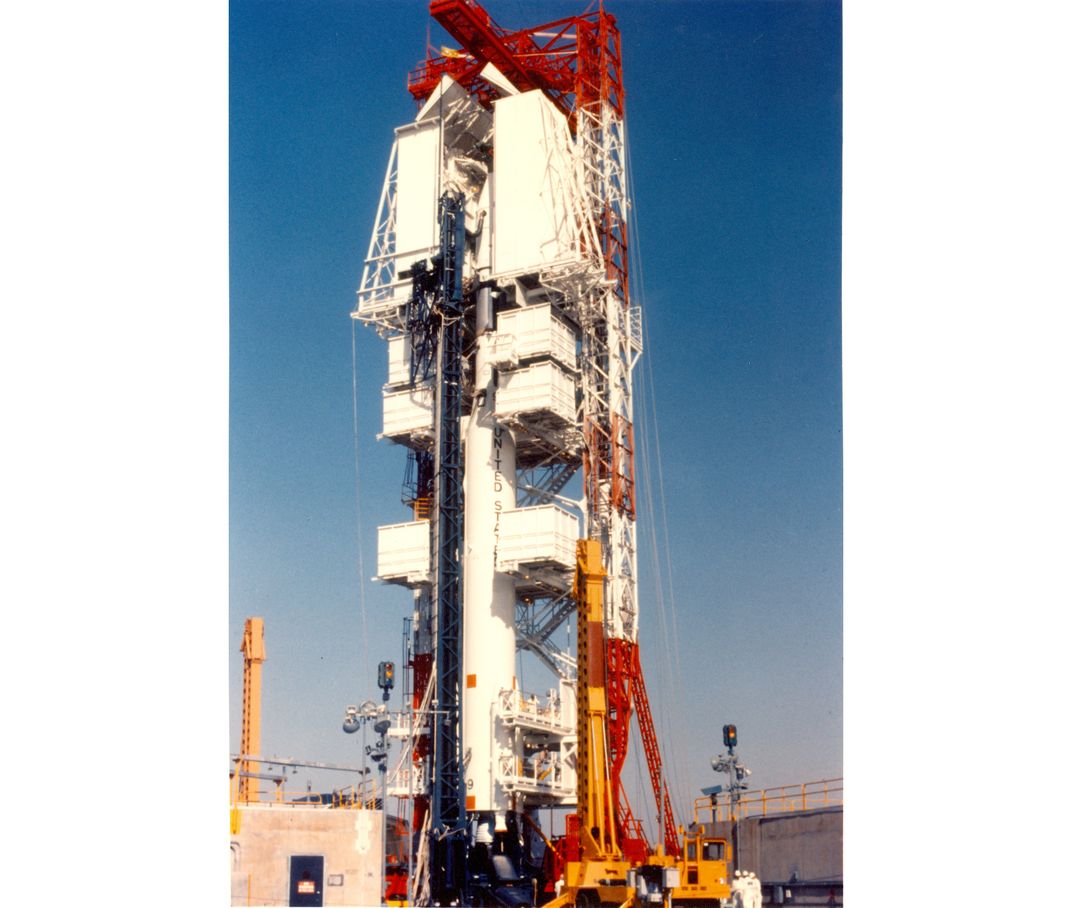
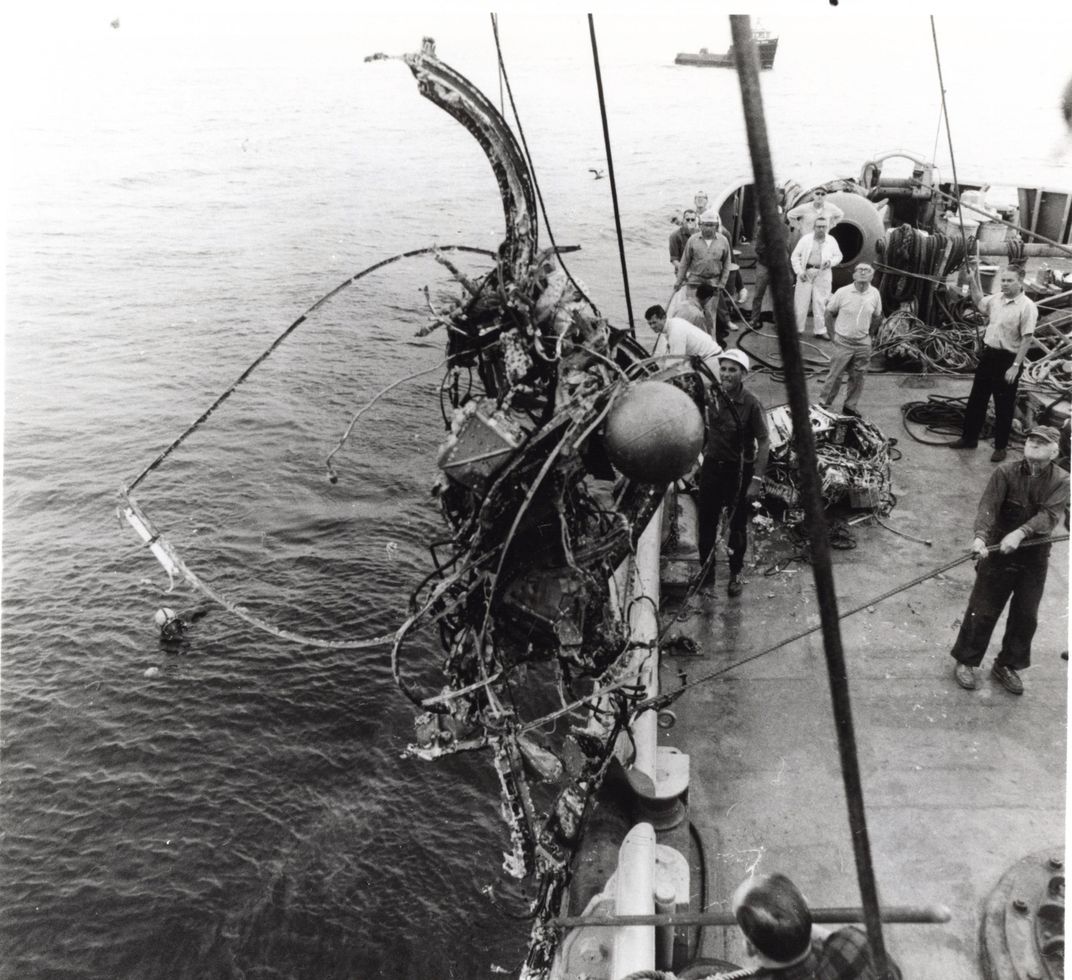
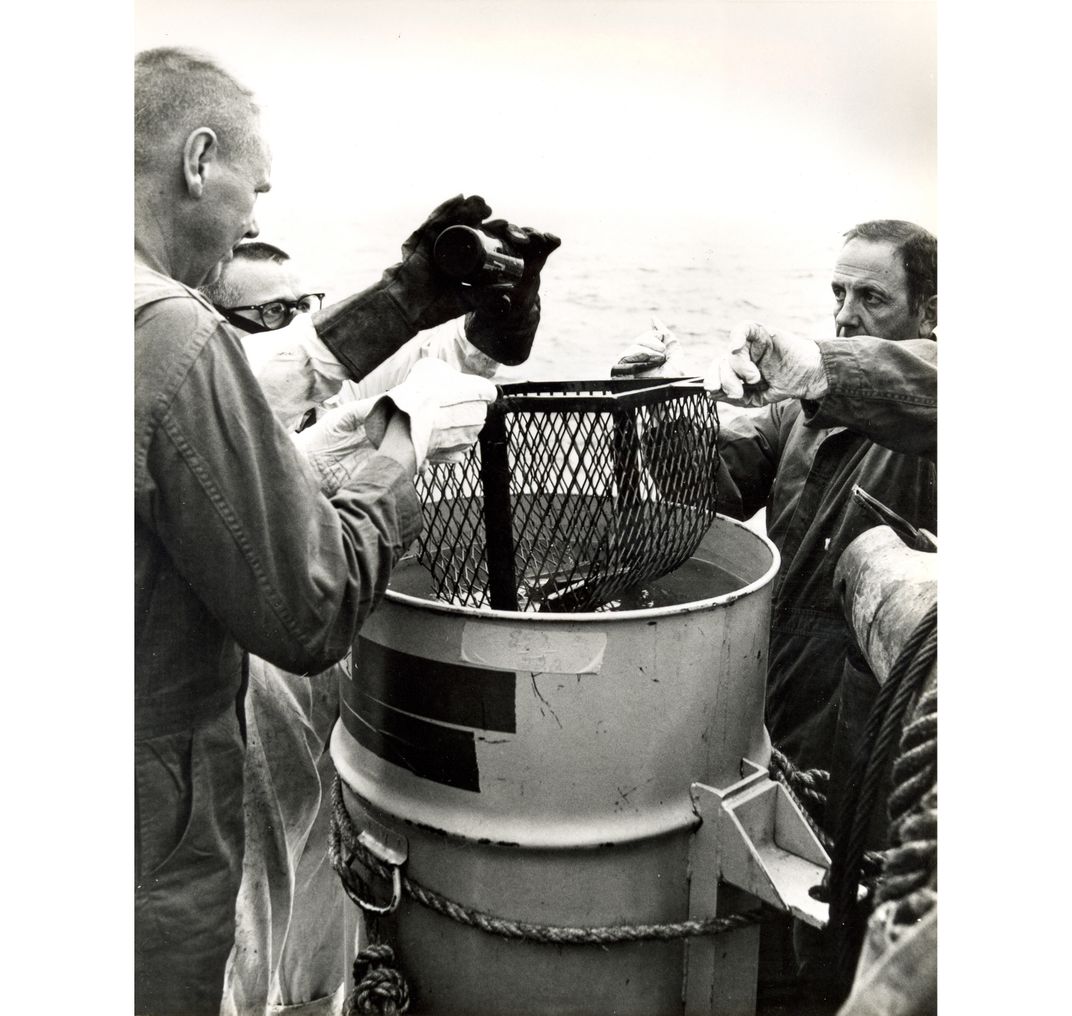
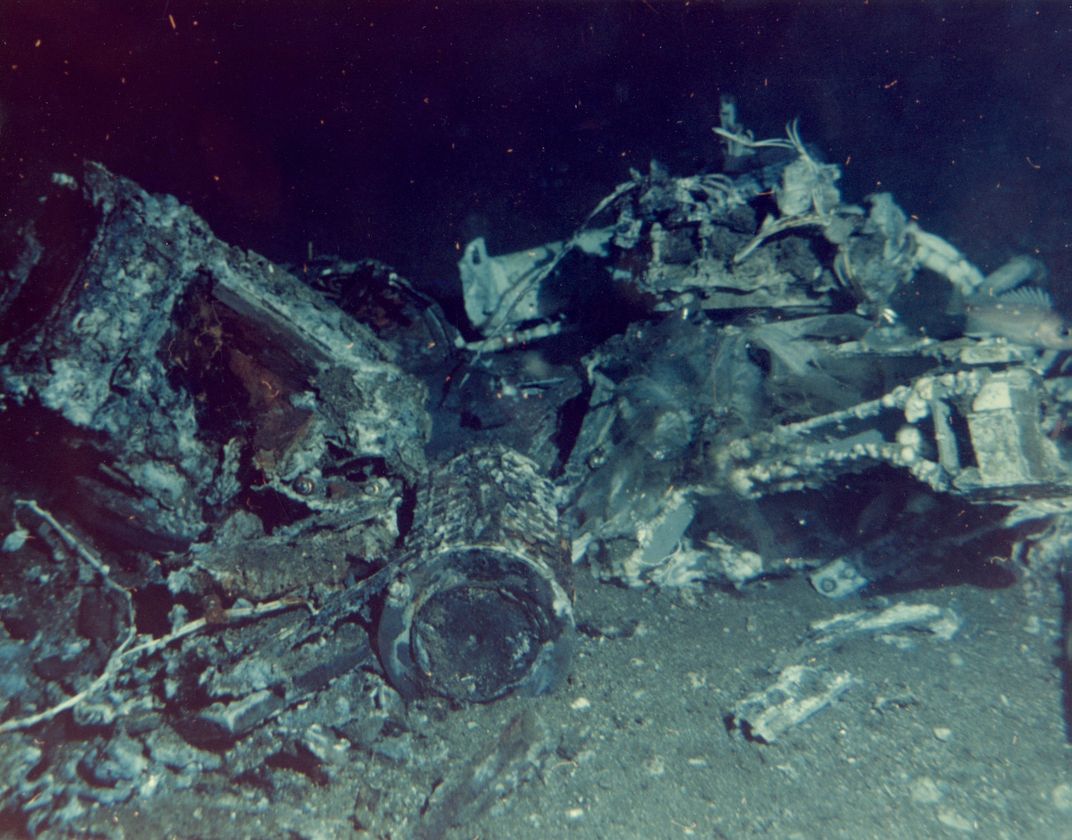
/https://tf-cmsv2-smithsonianmag-media.s3.amazonaws.com/accounts/headshot/Wei-Haas_Maya_Headshot-v2.png)